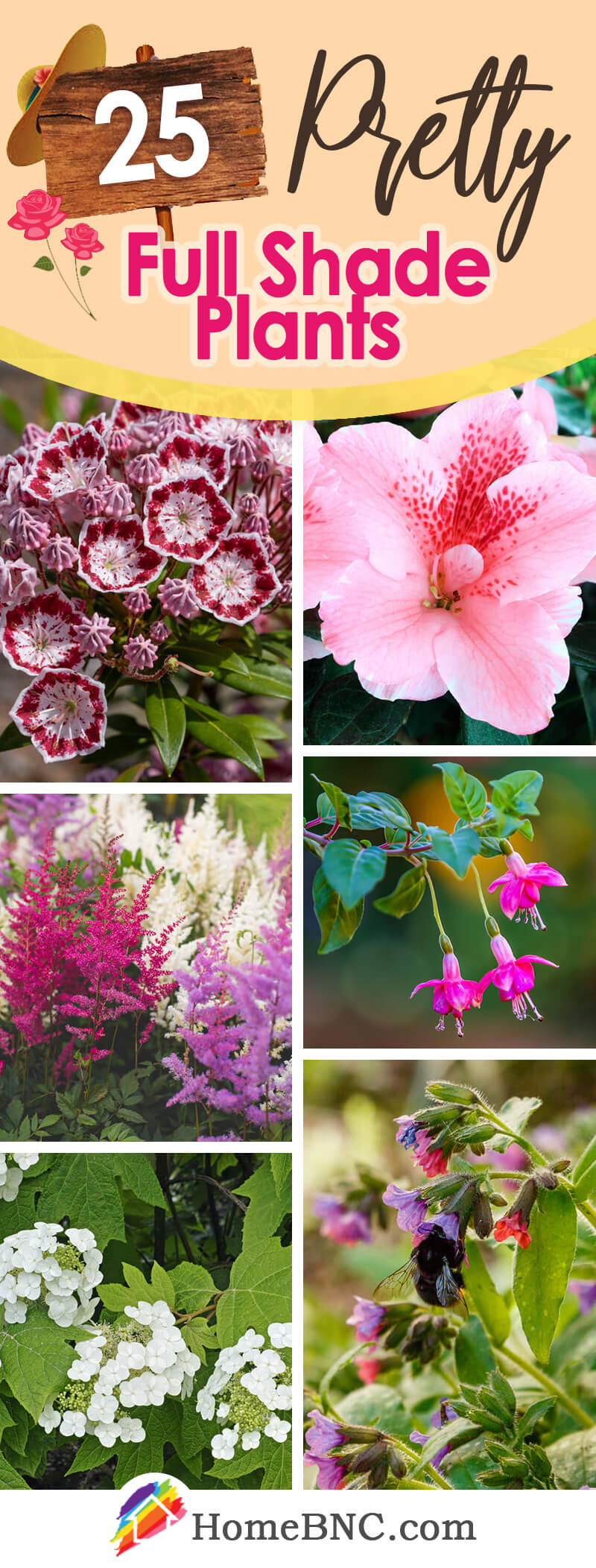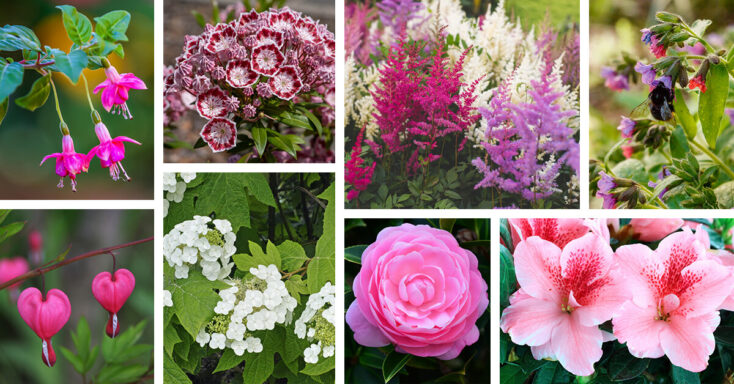Many people are quick to feel discouraged when faced with the task of planting in a full-shade area. However, those people are simply not aware of the many plants that grow in full-shade settings. This article will prove that there are many shade-loving species for you to choose from and that these plants come in many different forms. Read on to find plants that will dramatically improve the appearance of your landscape, even if your property receives minimal amounts of daily light.
Key Takeaways
You are sure to pick up a lot of new information while you read through this list of the 25 best full-shade plants. However, within that wide range of information, you’ll find that there are a few broad takeaways that will recur throughout the article. Those key points are listed below.
- There are trees, shrubs, and perennial plants that grow in full shade.
- Full-shade plants can be surprisingly colorful.
- Many full-shade plants have fantastic foliage.
- There are plenty of full-shade plants that grow indoors.
- Most full-shade plants grow naturally in woodland areas.
25 Beautiful Plants that Grow in Full Shade and will Make Your Garden Look Fantastic
1. Astilbe (Astilbe)
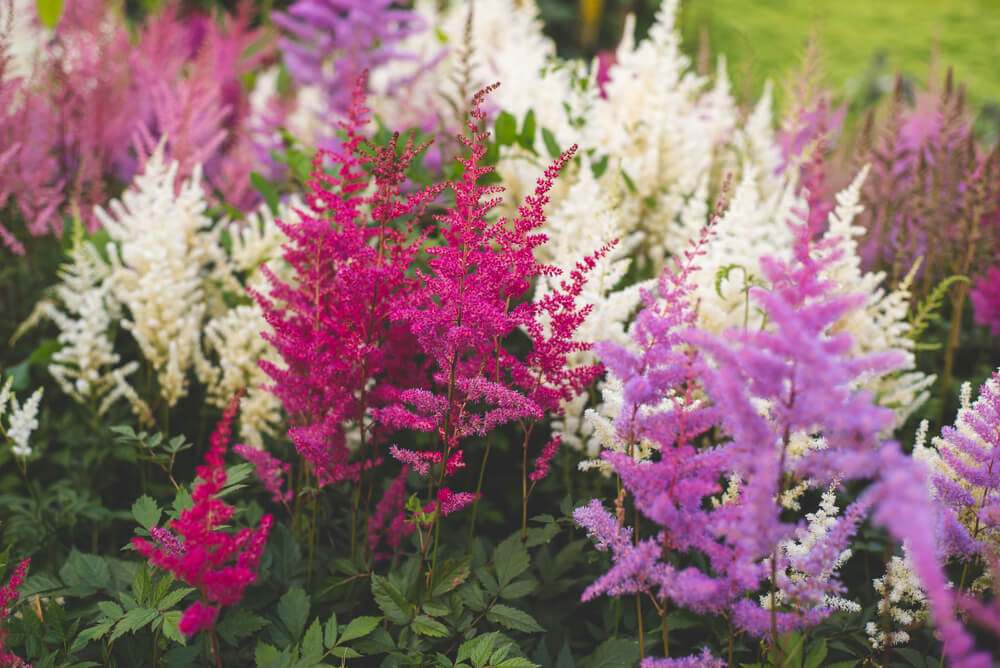
Although it may not be one of the most well-known perennial plants, astilbe is one of the best perennial options for areas that range from partial shade to full shade. This plant has large leaves with complex margins that make for a jagged texture. It also produces large spike-shaped clusters of tiny flowers that stand above the foliage during summer and fall. Those fuzzy flowers prove to be quite long-lasting each year and can come in many shades as well, including white, pink, and purple.
2. Azalea (Rhododendron)
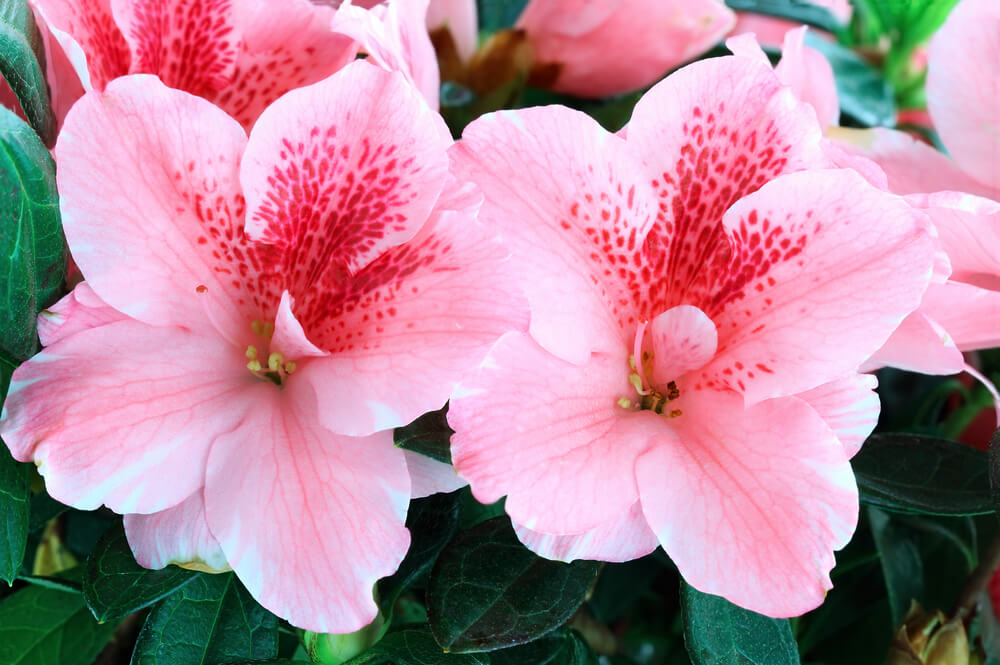
Azalea shrubs belong to the Rhododendron genus and come in a dizzying array of varieties, including various species types and cultivars of those species. Each azalea type can provide different flower color options, but they generally share some common characteristics as well, one of which is a great ability to grow in low-light conditions. Along with that impressive shade tolerance, azaleas can also boast as being among the most attractive broad-leaved evergreen plants that you can find.
3. Bleeding Heart (Lamprocapnos spectabilis)

It’s not worth mentioning bleeding heart on this list without focusing on the features that give this plant its interesting common name. This shade-loving perennial has arching stems, along which dangle ornament-like flowers that take the shape of a heart. What adds to the effect is the vibrant magenta color that those flowers have as well. Bleeding heart plants can grow relatively large, sometimes appearing more shrub-like in size during the later parts of the growing season, and are the perfect ornamental plant for the shady parts of your yard.
4. Camellia (Camellia japonica)
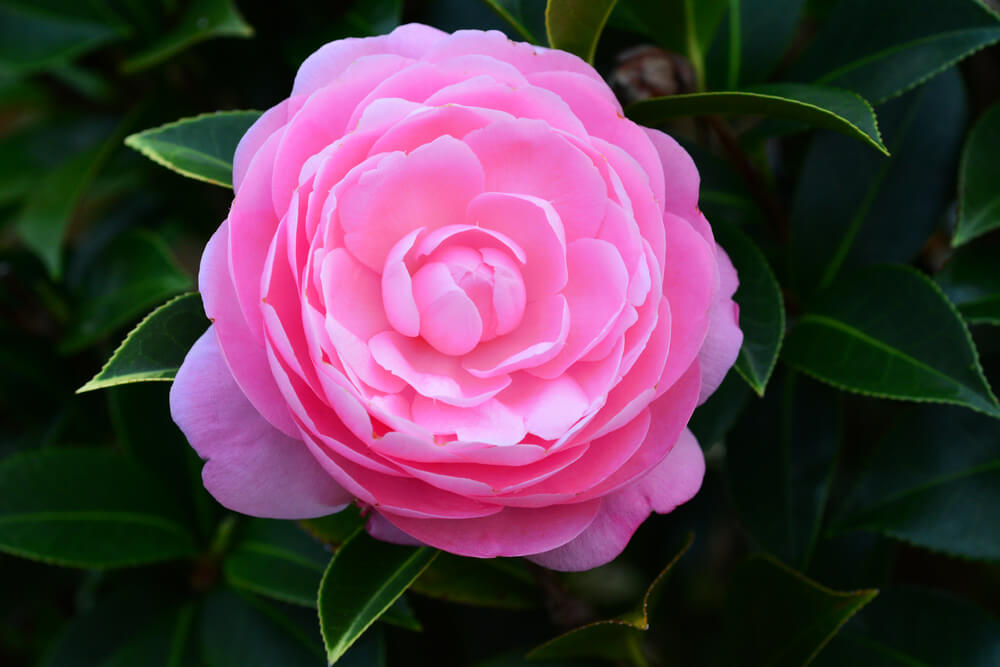
Arguing against the beauty of camellia is a virtual impossibility. To start with, this plant develops into a graceful multi-stemmed small tree form and has a rounded canopy full of dark green glossy evergreen leaves. Nestled within that gleaming canopy, you’ll find bold rose-like flowers that sometimes appear almost geometric. To top it all off, the camellia tree also prefers areas with minimal light. However, before settling on this plant to be the focal point of your shaded garden, remember that camellia plants typically survive only from hardiness zone 7 to 9.
5. Chinese Evergreen (Aglaonema)

The Chinese evergreen is the first of a few popular indoor plants that we’ll mention. Like the plants to follow, part of what makes the Chinese evergreen plant suitable for indoor growing locations is its ability to tolerate the low-light conditions that are typically present indoors. Chinese evergreen also adapts well to pots and has a moderate mature size of about three by three feet, further adding to its suitability as part of an indoor garden. Still, what you’ll love most about this plant is the striking yet subdued appearance of its leaves, which typically show patterns of dark green and pale greenish white.
6. Coleus (Plectranthus scutellarioides)
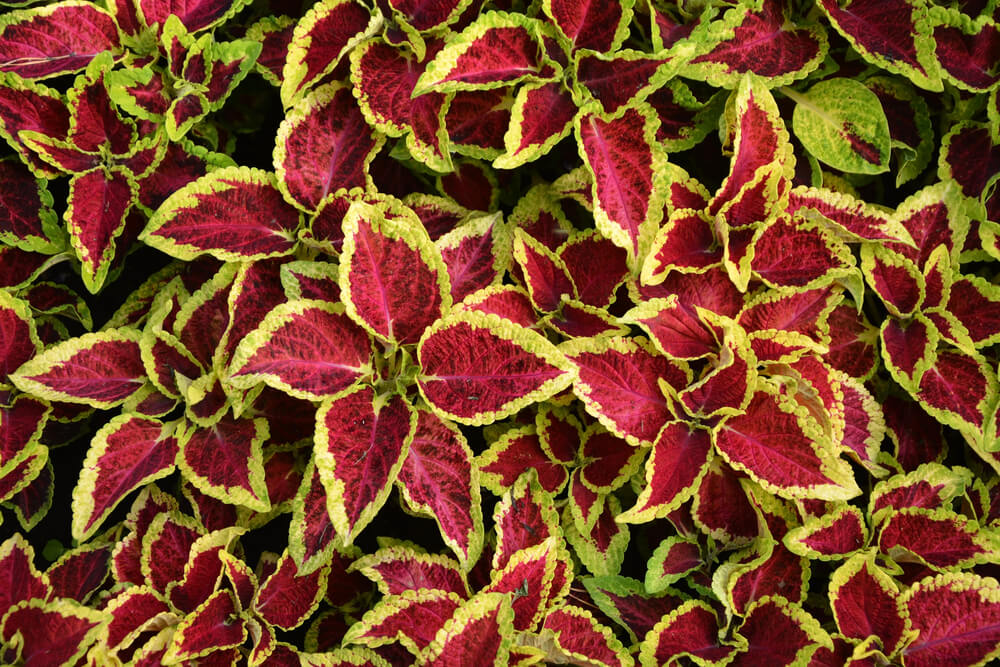
Anyone familiar with coleus plants knows they are among the most impressive foliage plants. Coleus comes in an incredible variety of options, almost all of which have almost unimaginably vibrant color patterns that you have to see to believe. Still, if you want to keep those leaves looking their best, then you need to prevent this plant from receiving too much sun, which often leads to leaf scorch or faded leaf colors. As such, coleus plants prove to be the perfect addition for you if you have a full-shade growing area.
7. Coral Bells (Heuchera)
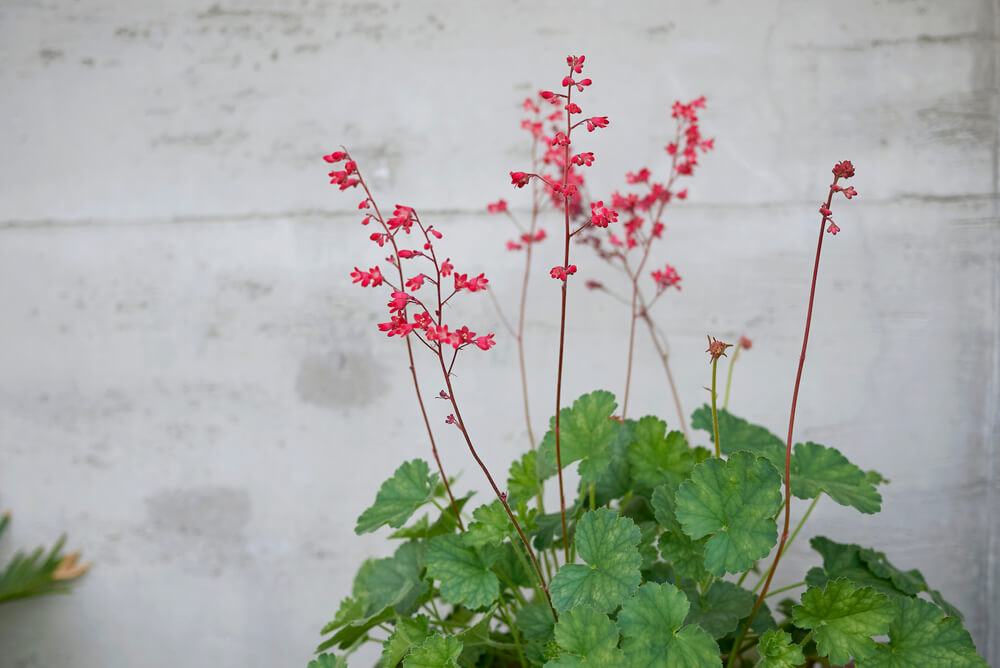
Have you ever been faced with the task of finding a plant for a growing space that is not only full shade but also incredibly small? If so, then you know how difficult finding such a plant can be. Fortunately, the lovely perennial known as coral bells is the perfect solution to this problem. Coral bells rarely grow to more than one and a half feet tall and have a minimal spread as well. This plant also comes with multiple foliage color options. While some are a typical green, others are more of a bronze or purple color. But regardless of leaf shade, this plant will provide an adorable set of small bell-shaped flowers when in bloom.
8. Creeping Dogwood (Cornus canadensis)
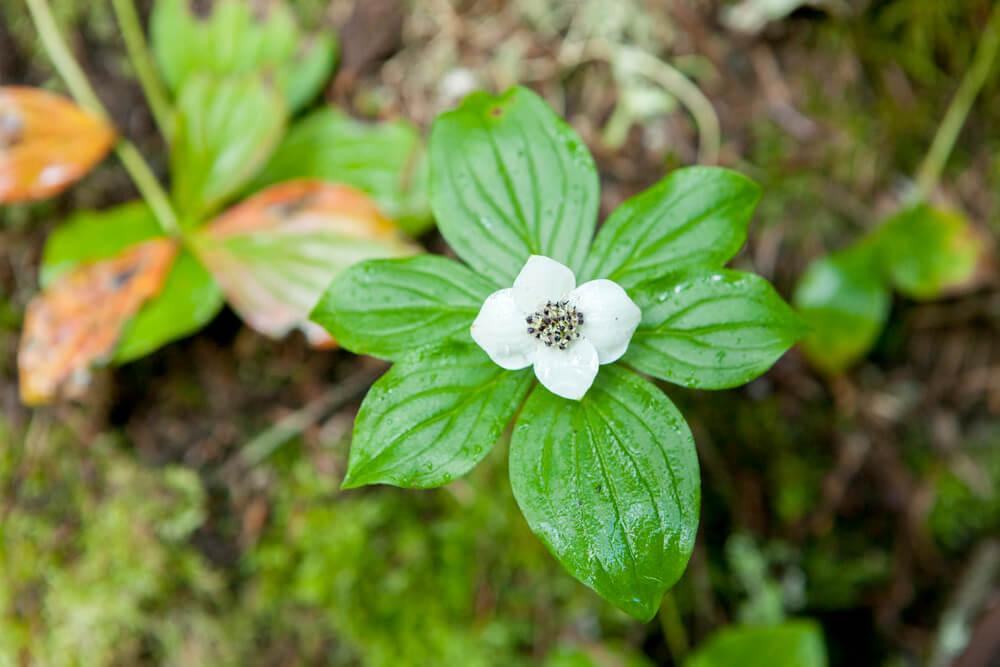
Most people are aware of the beauty of the flowering dogwood tree. But did you know that the flowering dogwood tree has a relative that, despite being a low-growing species, bears a remarkable resemblance to the tree dogwoods we know and love? As its name implies, creeping dogwood grows along the ground, reaching no more than a few inches tall. Despite that, this plant’s leaves, flowers, and fruits are in many ways identical to those of the dogwood tree. You’ll find creeping dogwoods growing most often in forested areas since they are lovers of full shade.
9. Devil’s Ivy (Epipremmum aureum)
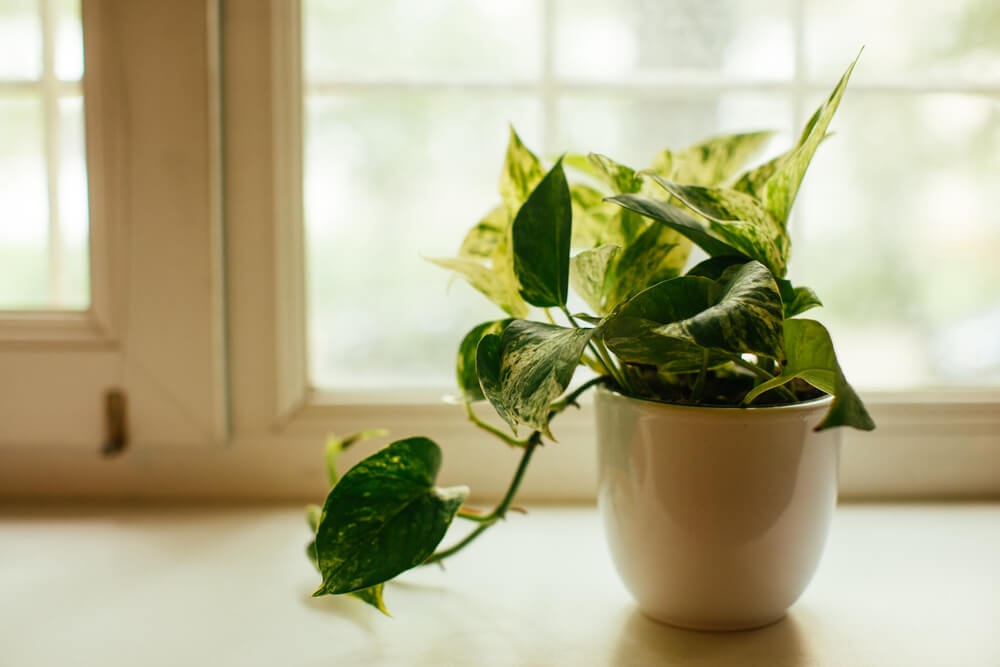
One of the greatest difficulties for those who want to grow indoor plants is finding plant species that not only survive in low-light indoor settings but thrive to the point of preferring full shade. If you find yourself in that situation, then the devil’s ivy plant may just be your best friend. Devil’s Ivy seems to not mind getting very little sun during the day and still maintains a rapid growth rate.
10. English Ivy (Hedera helix)
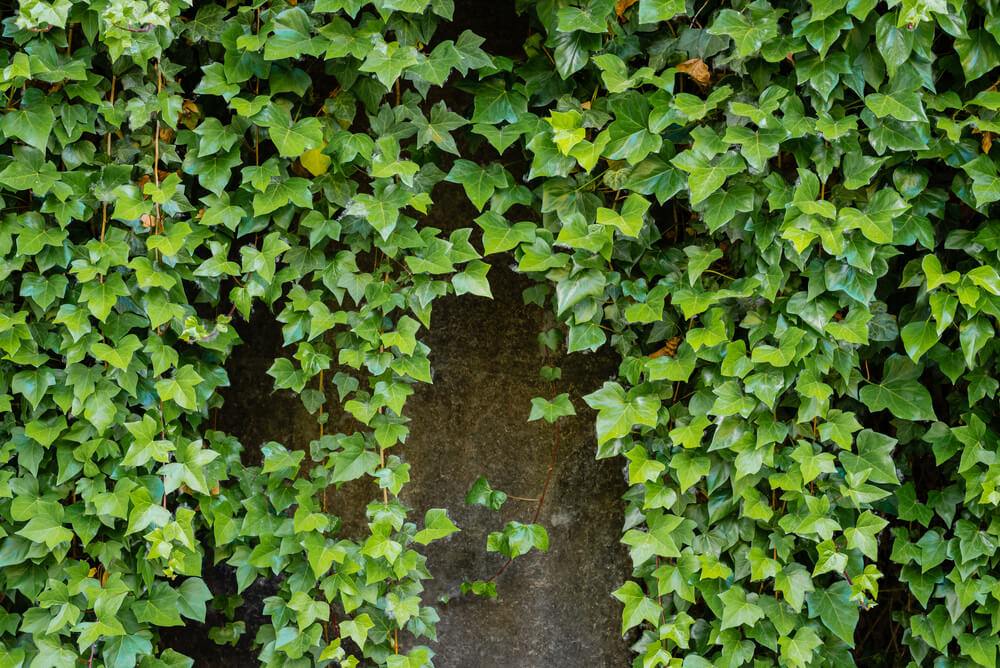
In many ways, English ivy is the quintessential ivy plant. It is also a species that can thrive in full-shade growing conditions. If you are looking for a climbing or groundcover plant for such a low-light growing area, then English ivy should be at the top of your list of choices. What makes this plant most recognizable is its iconic evergreen leaves which have a distinct trident shape and dark glossy green surfaces. However, you can also find cultivars of this plant that offer variegated foliage.
11. Fuchsia (Fuchsia)
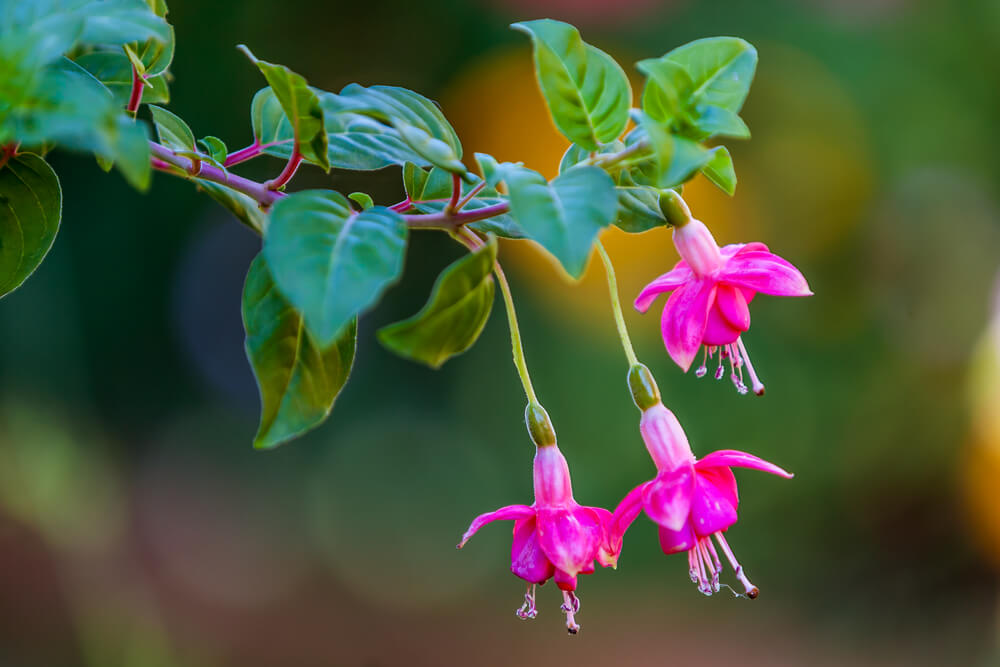
Among many, there is a commonly held notion that full-shade gardens cannot provide the same among of color as their full-sun counterparts. However, while there certainly are more colorful plants that prefer full or partial sun, the fuchsia plant proves that there are incredibly colorful plants that thrive in full shade as well. In fact, this plant has some of the most fantastic blooms you can find at any level of sun exposure. They have an intriguing dangling shape, and they hold shades of both purple and pink.
12. Hay-Scented Fern (Lamprocapnos spectabilis)

Hay-scented fern is a plant that loves to grow throughout moist woodland areas, which means that it is naturally well-suited to areas that sit in partial or full shade. While this plant does not offer much in terms of color variation, its foliage makes it well worth planting. The hay-scented fern emerges from the ground each year with a set of fronds that unfurl as they develop, eventually forming an intricate leaf pattern. This plant also gives off a pleasant smell that is sure to improve the overall atmosphere of your full-shade garden.
13. Hosta (Hosta)
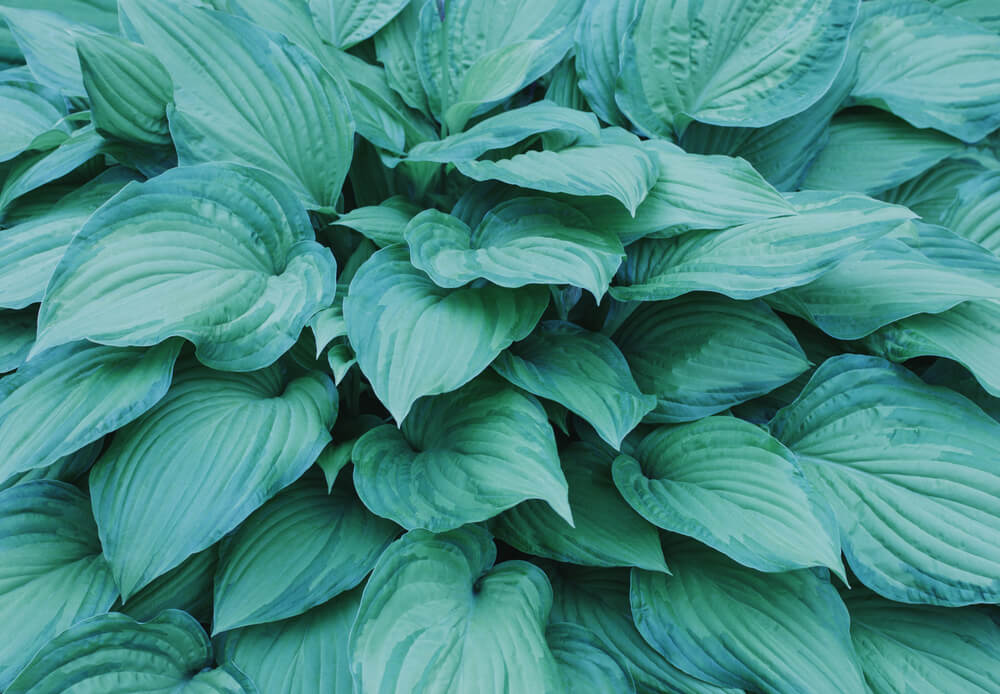
When it comes to full-shade plants, there are some options that are more popular than others. This plant is among the most popular and reliable of those options. Hostas are perennial plants with attractive broad leaves. They are also easy to care for and grow well in varying degrees of sun exposure. While the leaves of this plant are the most notable feature, hostas also bloom with small purplish-white flowers that hang at the top of long vertical stalks.
14. Jack-in-the-Pulpit (Arisaema triphyllum)
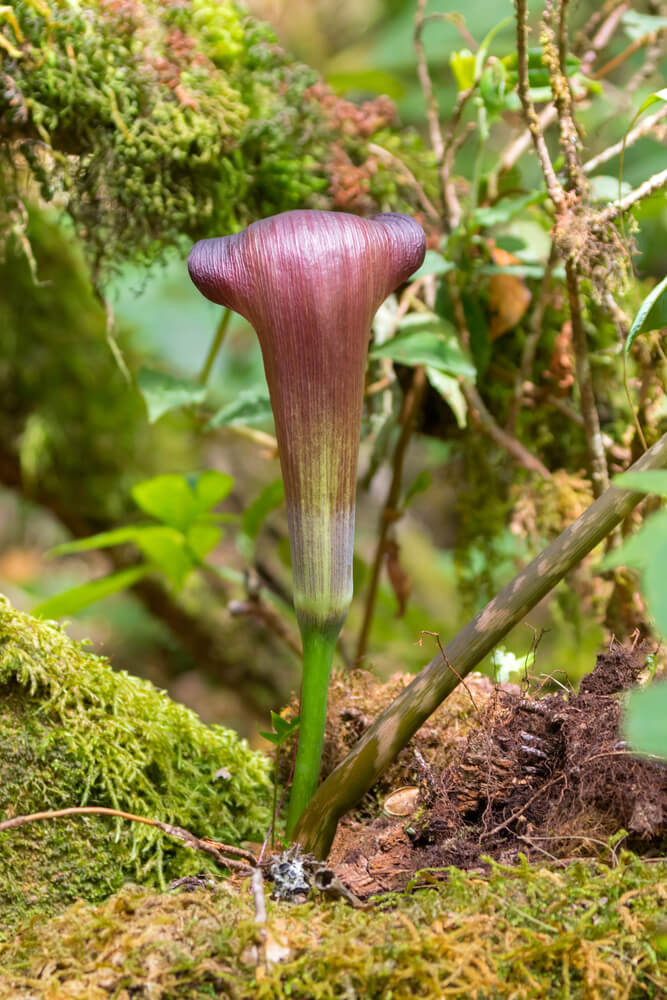
For those who love unique flowers, the Jack-in-the-pulpit plant is a perfect option for full-shade settings. The Jack-in-the-pulpit flower is prominent, vertical, and tube-shaped. At the top of that vertical tube structure is a curving leaf-like appendage that curls over the opening of the tube. As is true of some plants we’ve already mentioned on this list, the Jack-in-the-pulpit plant is another woodland-dwelling species that loves shady, moist conditions, which is part of what makes it ideal for those trying to grow gardens in yards that lack sunlight.
15. Japanese Painted Fern (Athyrium niponicum)
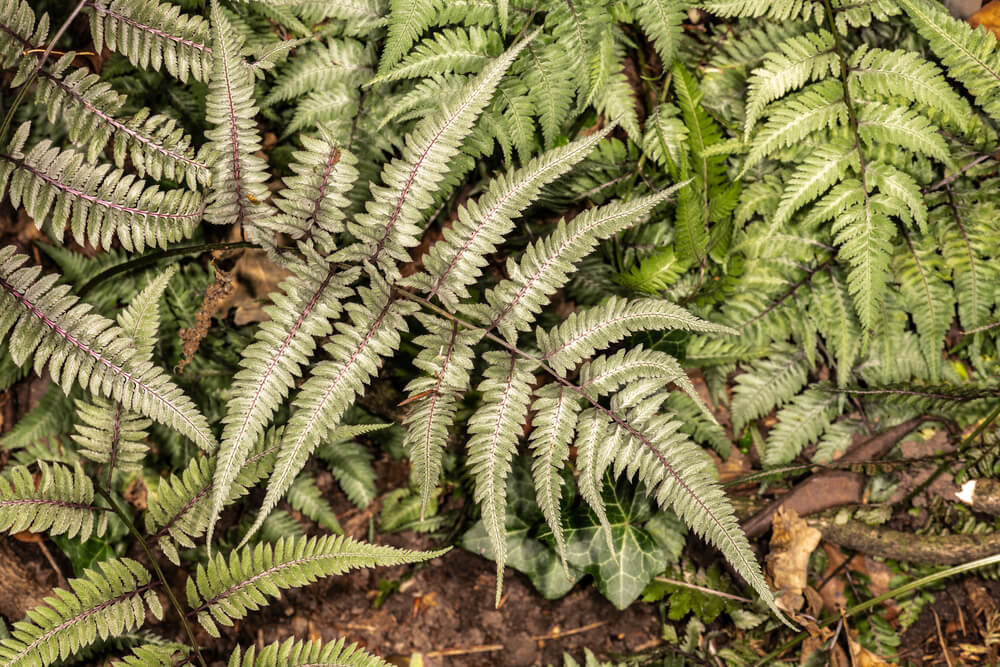
If you love the general shape and style of a classic fern but want a plant that is a bit out of the ordinary, then the Japanese painted fern is the plant for you. Japanese painted ferns are like other ferns in that they grow with fronds that unfurl as they develop. What’s different about this plant is the color of those fronds. While most other ferns tend to be green, the Japanese painted fern shows colors like purple and silver.
16. Japanese Yew (Taxus cuspidate)
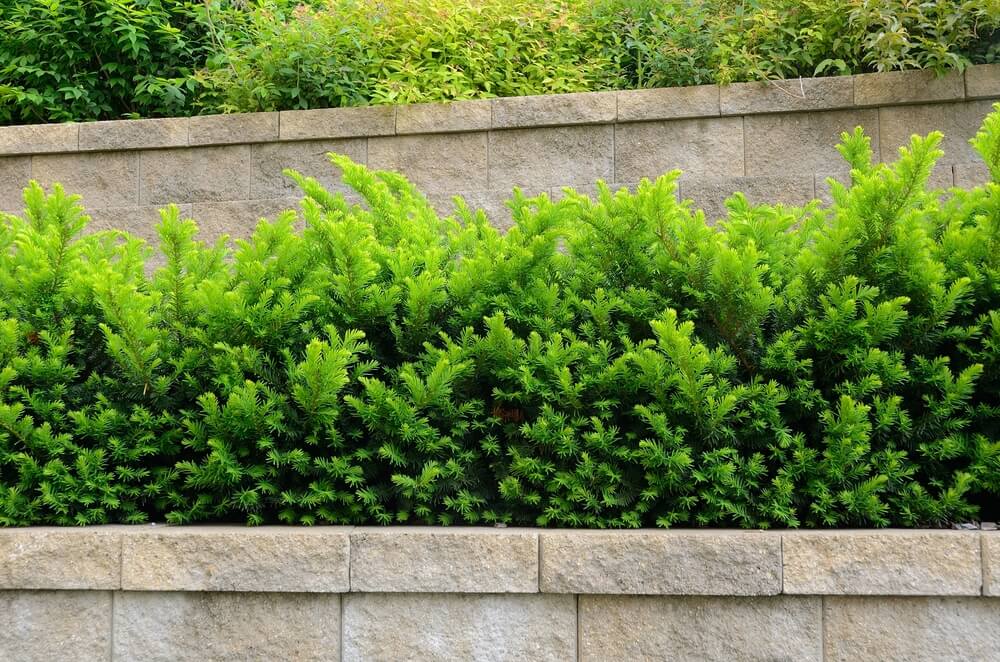
At first, it can be somewhat difficult to find plants that grow in full shade, especially if you are looking for specific types of plants, such as those that make good hedges. Fortunately, if you are trying to grow a hedge in an area that does not receive much light, there is an excellent option for you. The Japanese yew has dense needled foliage that remains on the plant all year and is great for blocking sight lines and noise. Yews also respond very well to shearing and shaping, and they can grow in some of the most shaded areas imaginable such as on the north side of a building.
17. Leopard Plant (Farfugium japonicum)
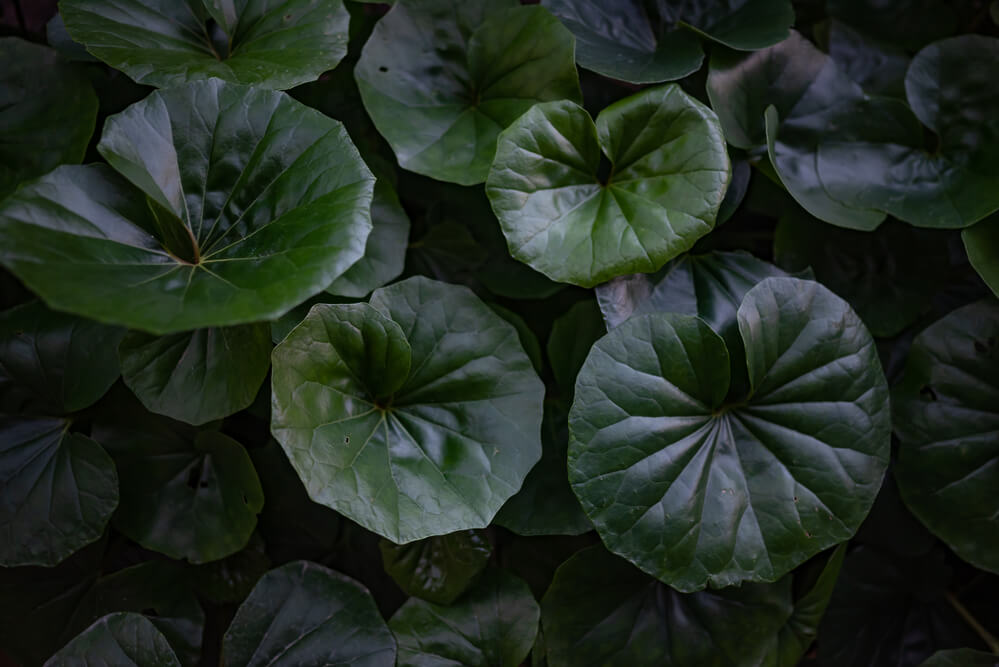
Leopard plants are not only great for full-shade gardens, but they are also uniquely attractive thanks to the combination of their foliage and flowers. The leaves rest just a few inches above the ground, and they have a very round shape with a dark glossy texture. The flowers are far more prominent as they are bright yellow and stand prominently above the leaves while the plant is in bloom.
18. Lungwort (Pulmonaria)

Don’t get thrown off by the somewhat unpleasant name of this plant because lungwort is one of the prettiest small full-shade perennials around. Lungwort gets its name from the pattern that appears on its leaves, which are mainly light green with pale splotches scattered throughout. Along with those leaves, lungwort plants also have beautiful purple flowers that are attractive to both humans and pollinator species alike.
19. Mountain Laurel (Kalmia latifolia)
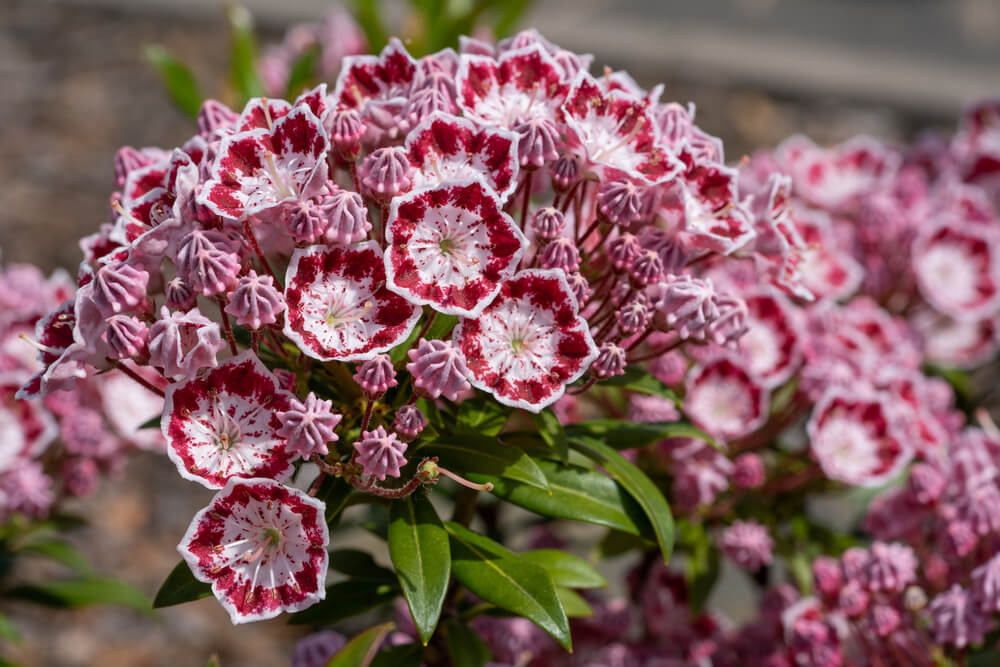
There are several flowering broadleaf evergreen shrubs that do well in full shade, but none of them are as attractive during the late spring and early summer as the mountain laurel. That’s the time of year when the mountain laurel is in full bloom, during which time it shows off bunches of hexagonal flowers that come in shades of white and pink. In the wild, you can often find this plant growing in colonies in shaded forested areas and along steam banks and pond shores.
20. Myrtle (Vinca minor)
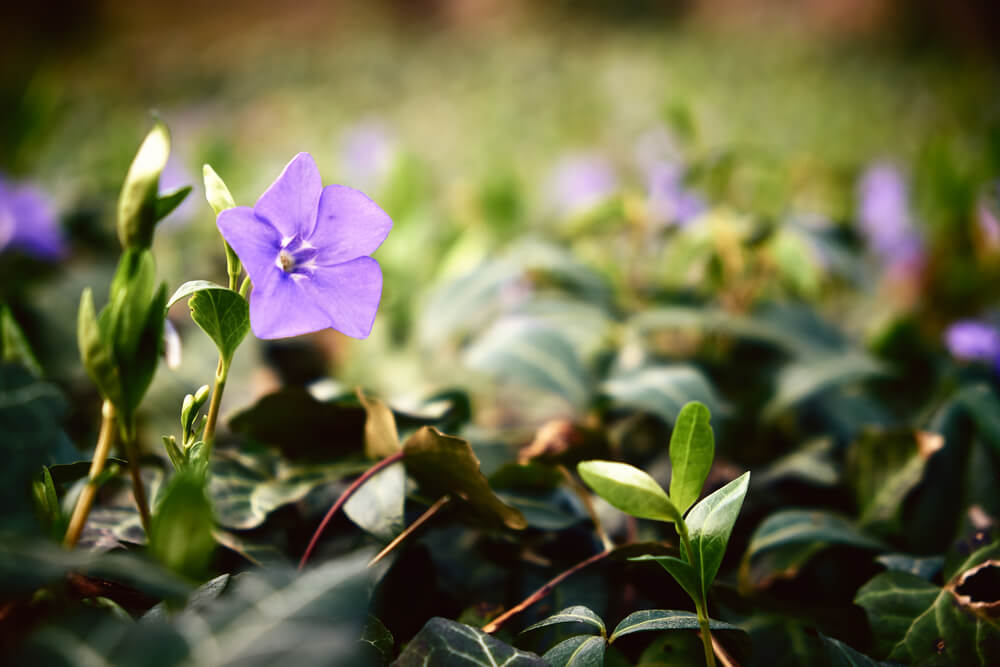
Myrtle, also known as Vinca minor, is one of the most reliable groundcover plants that you can grow in your garden. This plant provides full coverage wherever it meanders, thanks to its oval-shaped evergreen leaves. During the spring, this plant improves upon that look by adding a set of pinwheel-shaped flowers that are a consistent purple shade. Add this to even the most shaded of garden spaces, and the myrtle plant will soon have your garden looking lusher than ever before in all seasons.
21. Oakleaf Hydrangea (Hydrangea quercifolia)
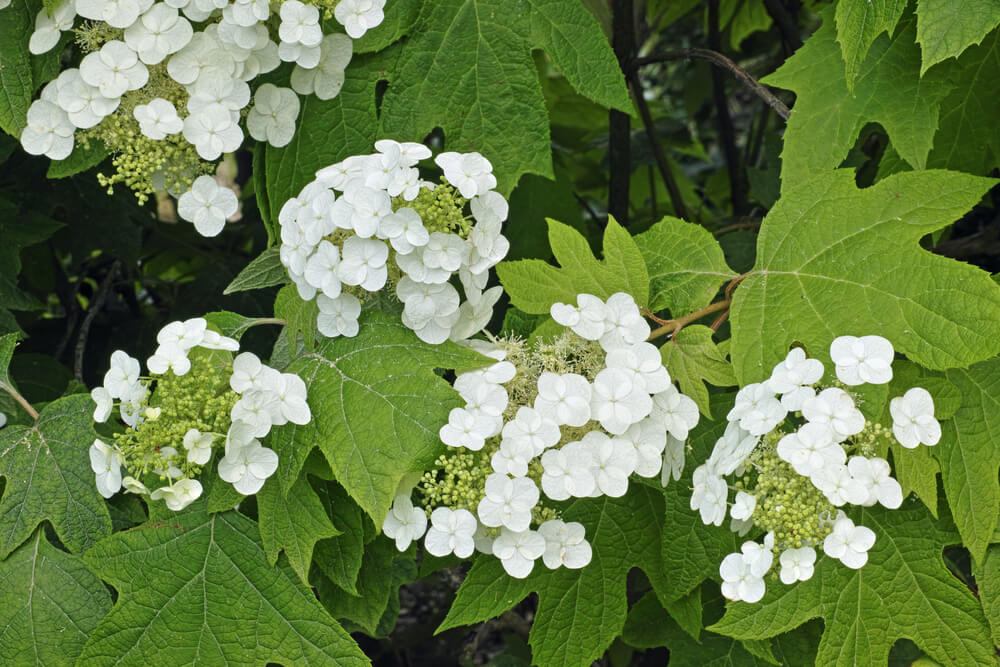
There are several hydrangea varieties that are more widely planted than this one, but there are none that are more versatile when it comes to growing preferences. The oakleaf hydrangea is able to grow in many different soil types and can survive in full sun, partial shade, and full shade. Along with great adaptability, the oakleaf hydrangea also has long-lasting flower clusters and a leaf shape that is unlike that of any other hydrangea shrub.
22. Peace Lily (Spathiphyllum)
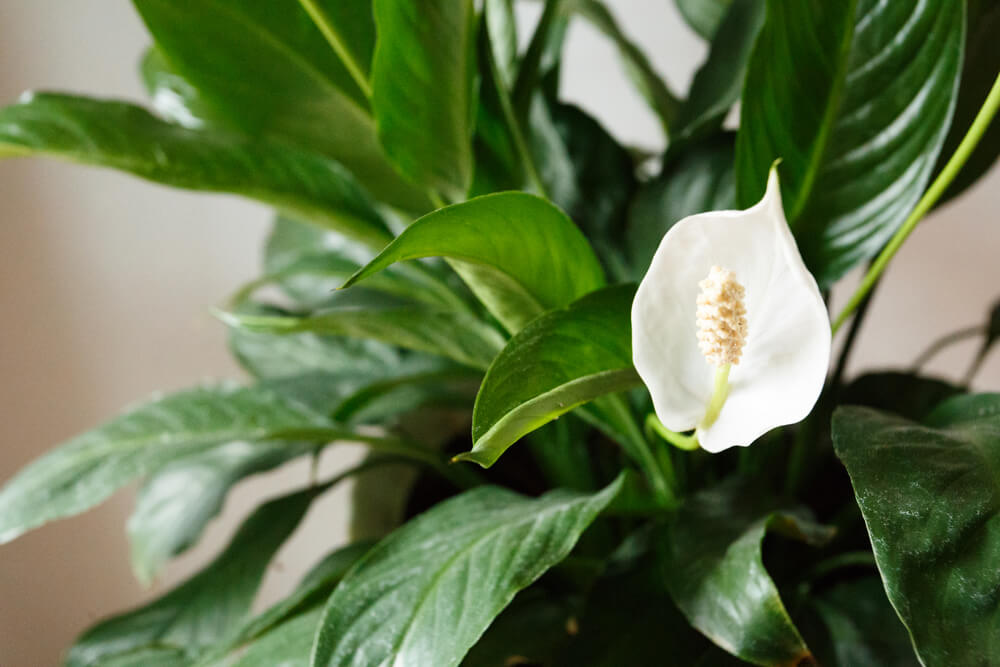
In many ways, the peace lily plant is the ideal indoor houseplant, especially for homes that receive minimal daily light. While this plant is on the larger side for an indoor species, it is well-worth planting if you have the space. What makes this plant beautiful is its large oval leaves and the brilliant flowers that stand above them. Those flowers have a single pure white petal that has a pointed shape and stands straight up in the air, making itself known to all those who pass by.
23. Snake Plant (Dracaena trifasciata)

There are some gardeners who want an indoor plant that is so easy to grow that you can essentially ignore it, and it will continue to thrive. The snake plant is one of the few species that can deliver on that promise. Snake plants need very little light and water to perform well. They also have interesting leaves, which are long and upright and have shades of dark green at the center and light yellow-green at the margins.
24. Spider Plant (Chlorophytum comosum)

Just like the previous entry on the list, this plant has an animal-inspired name, interesting foliage, and the ability to grow well indoors. The spider plant is a small species that do not need much light and grows with long arching leaves that look a lot like the legs of a spider. Those leaves also have long stripes of white that make this plant look even more elegant. At times, planting this species in a hanging basket is the best way to show it off.
25. Toad Lily (Tricyrtis hirta)

Our final plant on the list is a perennial groundcover species that loves to live in the wet and shady areas of forested landscapes. The toad lily is a very leafy plant that is great for adding background greenery to shaded planting beds, but it also has some captivating flowers as well. Those flowers have a circular form with six petals. Across those petals, you’ll see varying shades, including pink, red, and yellow, which appear with a beautiful, speckled pattern.
Frequently Asked Questions About Plants that Grow in Full Shade
What Plants Can Be in the Shade?
Determining what plants can be in the shade depends on how much shade you are talking about. For instance, there are countless plants that thrive in partial shade settings, which means the area receives about 4 to 6 hours of light per day. However, there are generally fewer plants that survive in full shade, which implies that an area receives just a few hours of light per day, typically much less than four hours.
What is Best to Grow in the Shade?
The best plants to grow in the shade are those that are naturally well-suited to shaded areas. To understand what these plants are, it's helpful to imagine the ecosystems from which they originate. Often, the plants that are best to grow in the shade are those that come from woodland settings in which large canopy trees prevent full sunlight from reaching the forest floor.
Do Plants Grow Well in the Shade?
Plants will grow well in the shade if that is the growth setting that they prefer. In other words, if you have a plant that tolerates partial or full shade as part of its listed growing requirements, then it should do fine in the shade. On the other hand, planting a species that prefers full sunlight in a space that is more shaded is a sure way to cause the demise of your plant.
Can Ferns Grow in Full Shade?
Ferns are among the many perennial species that grow in full shade. The reason why ferns are so well-adapted to shade is that they are woodland plants that thrive in the moist understory of larger trees. That natural preference makes ferns perfect for full shade. In fact, when they find conditions they like, you can expect ferns to spread rapidly and cover a broad area.
What Does Deep Shade Mean?
Deep shade is essentially a synonym for full shade. The exact definition for these terms is an area that receives four hours of light per day or less. However, many full-shade areas receive even less light than that. Additionally, there is another type of shaded condition known as filtered light, which is what you would find below a tree canopy and can be considered another form of deep shade.
Will Roses Grow in the Shade?
While there are several beautiful plants that grow in full shade, including many that have lovely flowers, roses are not among them. Rose plants require full sunlight to look their best but can tolerate partial shade as well. However, if you plant a rose shrub in full shade, you cannot expect it to grow well. Instead, it will likely have stunted growth and minimal flower, if it survives at all.
Do Begonias Like Shade?
Begonias are one of the few plant species that do not appear to have a preference for any specific level of sun exposure. Amazingly, these beautiful plants can grow in full sunlight, partial shade, or full shade conditions. This makes begonias not only very attractive but very versatile plants that are a great addition to almost any garden.
Full-shade plants come in many different forms, which is why it can be difficult to develop a comprehensive knowledge of all the species that fall within this group. That’s why we have assembled a list of the most common questions on the topic while providing some quick answers.
25 Reliable Plants that Grow in Full Shade and Don’t Mind Missing the Sun at All
If you were once someone who believed that there are not many plants that grow well in full-shade settings, hopefully, this list of the 25 best full-shade plants has changed your mind. As the list shows, there is an incredibly wide variety of plants that thrive in low-light settings. To find the one that is right for you and your garden, all you need to do is refer to the list above.
